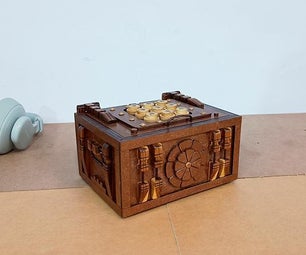Introduction: How to Play the Piano
The steps in this instruction are to help you to learn the basics of playing the piano.
The Piano is one of the most used instruments in music because of its variety and the fact that it can be used in so many different musical contexts.
The Piano is one of the most used instruments in music because of its variety and the fact that it can be used in so many different musical contexts.
Step 1: Buying a Piano
If you don't already own a piano (or have access to one), you will need to buy one.
Because a high quality piano can often cost thousands of dollars, you could instead buy an Electronic Keyboard.
Whatever type of piano you choose to learn on, make sure that it is in good working condition.
Because a high quality piano can often cost thousands of dollars, you could instead buy an Electronic Keyboard.
Whatever type of piano you choose to learn on, make sure that it is in good working condition.
Step 2: Piano Basics
Before you can begin to play, you should learn some basic parts of the piano.
Parts
Keyboard:
On a normal piano, the keyboard is the horizontal row of keys that you use to play the music.
Keys:
Keys are the individual units that you must press down when you want to play a note.
Pedals:
Most pianos have three pedals at their base that you use to alter or sustain a note that you are played.
'Music Rack:'
Used to hold your sheet music.
Parts
Keyboard:
On a normal piano, the keyboard is the horizontal row of keys that you use to play the music.
Keys:
Keys are the individual units that you must press down when you want to play a note.
Pedals:
Most pianos have three pedals at their base that you use to alter or sustain a note that you are played.
'Music Rack:'
Used to hold your sheet music.
Step 3: Learning Notes
Each of the keys on the piano corresponds to a specific note value. When you want to learn to play the piano, you will need to know how to identify and determine the note value of each of the keys on the keyboard. The most basic between the keys is that some are black and some are white.
The White Keys
The white keys cover the entire length of the keyboard and represent all of the natural notes on the piano. These notes are represented by the first 7 letters of the alphabet (A - G).
The Black Keys
The black keys are on the top of the keyboard and can be found in groups of 2 or 3. Learning the note value of the black keys is a little more difficult than the white keys because the black keys can be labeled in two different ways. Black keys take their names from the white keys that surround them and can be labeled with either a # (Sharp - meaning that the key is a half-step higher than the white note to its left) or a b (Flat - meaning the key is a half-step lower than the white note to its right).
The White Keys
The white keys cover the entire length of the keyboard and represent all of the natural notes on the piano. These notes are represented by the first 7 letters of the alphabet (A - G).
The Black Keys
The black keys are on the top of the keyboard and can be found in groups of 2 or 3. Learning the note value of the black keys is a little more difficult than the white keys because the black keys can be labeled in two different ways. Black keys take their names from the white keys that surround them and can be labeled with either a # (Sharp - meaning that the key is a half-step higher than the white note to its left) or a b (Flat - meaning the key is a half-step lower than the white note to its right).
Step 4: Learning the Music
Now that you learned how to identify all of the notes on the keyboard, you have to learn where you find the note value in the music. There are different octaves. Every octaves goes from c to c.
That you can better read the music, you'll assign a number to each of your fingers. When reading the notes, your thumb will be referred to as 1, your index finger as 2, your middle finger as 3, your ring finger as 4, and your pinky as 5.
Look down below in the picture where you will learn where you find the note values in the music and with which finger you should play the note value.
That you can better read the music, you'll assign a number to each of your fingers. When reading the notes, your thumb will be referred to as 1, your index finger as 2, your middle finger as 3, your ring finger as 4, and your pinky as 5.
Look down below in the picture where you will learn where you find the note values in the music and with which finger you should play the note value.
Step 5: Playing Some Simple Songs
Now that you've learned some of the basic notes and where you can find them on your keyboard, you can start playing a few simple songs. First look at the music and try to find the notes on the keyboard than try slowly to start the song.
Step 6: Practicing
Now that you know some of the basics of playing the piano, it is important that you practice frequently and thoroughly.
Notice: The more you practice, the better you will get, and the more fun you will have the next time you practice.
Notice: The more you practice, the better you will get, and the more fun you will have the next time you practice.







